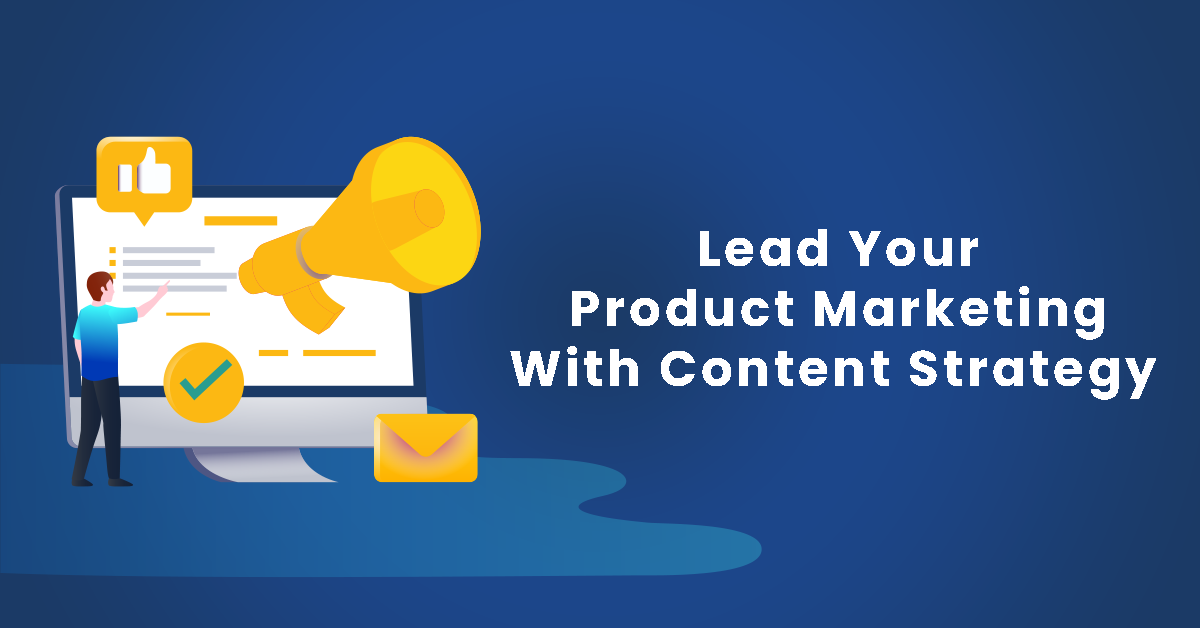It’s a cluttered marketplace out there, so how do I make my product stand out? This question has often haunted all Product Marketers (PMs). With multiple stakeholders involved in the B2B space, you should have an excellent reason for your consumers to choose your product unanimously.
An effective content strategy led by the power of business storytelling is what Product Marketers need today to succeed. Leading your product with strategies crafted by PM’s is essential to drive engagement and result in a conversion.
Importance of Product Marketing
Consider this – Your organization comes out with an excellent product, but on the day of the launch, you realise that the audience is not as excited as you expected them to be.
Why? There could be two obvious reasons.
- Your audience hasn’t understood the relevance of the product.
- Or they weren’t your audience in the first place.
Your marketing team is now hit by the fact that they need to carry out user research as well as identify a more nuanced segment of the audience to focus their advertisements.
This is how Product Marketing came into being and has been evolving.
While traditional marketing looks at the organization as a singular entity, product marketing has a more focused approach. The product marketing team works on understanding the genuine needs of the stakeholders involved in the buying process.
Generic, top of the funnel content does not work anymore. 77% of buyers want different content at each stage of the product research process.
To create content that reaches the audience in the specific funnel stage or intent, PM’s need to classify and segment the audience. They spend a lot of their time speaking to customers, understanding their pain points and engaging with them on their products. The product management team can take these insights to the marketing team and help their marketing efforts become much more effective.
Difference between product marketing and content marketing
Now you may ask, isn’t the content marketing team doing the same job?
No, they do not.
Content marketing and product marketing are subsets under the broader marketing umbrella. While the former focuses on engaging through informative content and then converting, the latter participates through product experience and users.
Content strategies to drive product marketing
1. Defining your target audience and buyer persona
Knowing your audience is the essence of product marketing. Research extensively on defining your target audience and draft an exhaustive list of buyer personas. These insights will help you identify and create content buckets that add direction to your marketing campaigns.
2. Determining your competitive positioning and messaging
Developing a competitive positioning, that is unique and solves your audience’s problems better are essential. social listening and interviewing your potential audience are potent tools to gain insights.
Make sure you work your way backward from the solution to the issues faced by your audience to frame better problem statements. Also, be open to A/B test on your messaging and see which campaign drives better engagement.
3. Driving content distribution
There are 4.5 million blog posts published every day
While there has been a surge in content for the last decade, the demand side has been seeing a drop. One of the prime focuses of the content strategy lies in content distribution. Although distribution takes place only once the content is created, we respectfully suggest, that the content distribution strategy must be done first. Understanding where your audience lies, and what they require are key elements to understand before developing the content. Content without a distribution strategy will not only result in low engagement but also in a waste of time and resources that go into development.
4. Developing the sales and marketing alignment
History tells us that sales and marketing have worked in silos. However, the advent of product marketing has brought out the need for this alignment. This is possible through crafting the right and actionable content strategy which drives common goals. It also acts as a cross-functional enabler to get the right Go-to-market strategy.
User experience is the future.
When product marketing is led with the right content strategy, the focus is on creating the right customer experience. PMs burn their midnight oil to understand what drives the users and what would influence them to make the purchase decision. Then, they want the problem to be addressed. Product evangelists preach 100 different ways to create the right user journey, but the key lies in creating a wholesome user engagement approach.
Ultimately your product’s content strategy should revolve around educating, delighting, and engaging the TGs.


